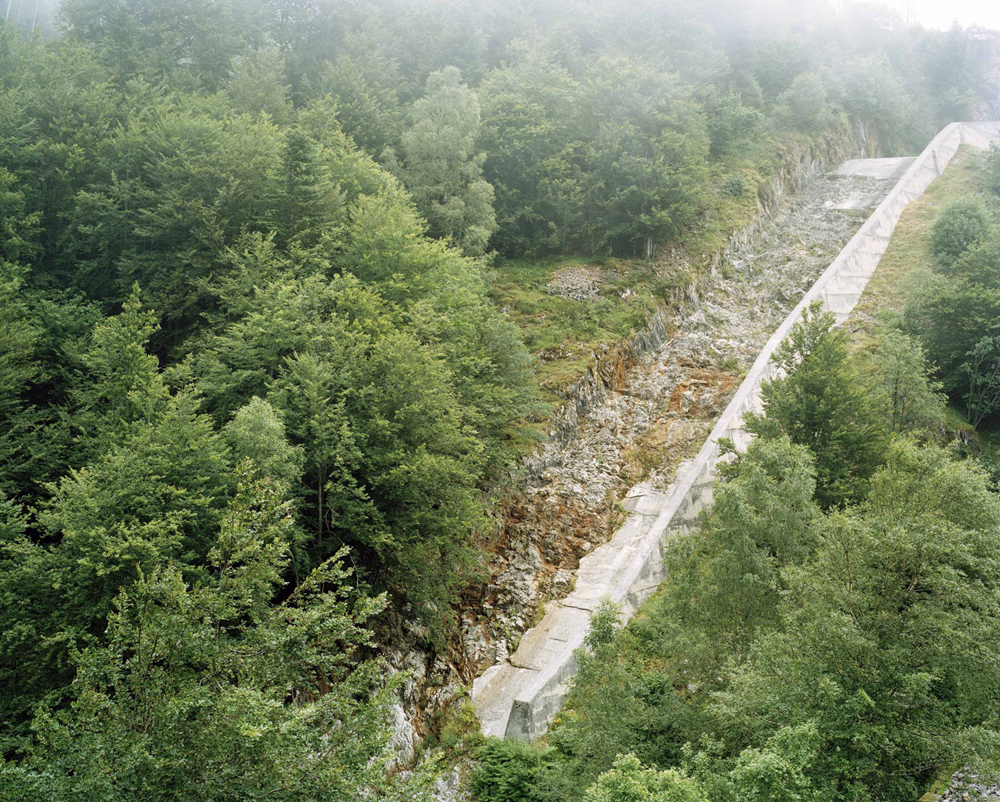« Because orthesis is also the culmination of a visual research, an attempt to establish formal connections between thinking and spatial forms through the images shown. In a 1967 essay, art historian Erwin Panofsky demonstrated that under certain conditions, architectural and thought forms can show structural homology what he describes as isomorphism, that is to say a structural matching between two fields of reality interacting with each other. This discovery was established by the author to reveal the connections between the scholastic rhetorical forms and the gothic architecture as manifested in the french cathedrals between 1270 and 1420. This approach, whose implementation to other historical periods has to be cautious, can however be valuable in helping the comprehension of spatial structures through images. In particular, the purpose here is to establish visual matching between the engineer XIXth century landscape vision, and architectural forms finding expression more specifically in mountains.
Therefore, orthesis is an hypothesis assuming that under certain circumstances, particularly in constrained situations that come with altitude, man’s input on landscape take an archaïc or urgent dimension, giving it large scale surgery or orthopaedics appearance. This critical point, where human interventions are made more complex because of weather and altitude, provides a fertile ground to identify those isomorphisms. Orthesis are intentionally depicted as in a laboratory, isolated and unable to whithstand the competition with others signifiers. As scientists say, they are photographed « all other factors being equal ».
Photography here certifies the linkage between an ideology of landscape reparation and its spatial translation as large scale orthopaedics. Those gigantic orthesis are there to rectify, hold back, improve, reinforce. Besides agriculture, urban planning or industry, they are based on a demiurgic premise : the possibility to restore (from latin restaurae : repair, bebuild, renew) natural elements.
Those oversized gardening actions are carrying a corporeal metaphor. Behind their apparent technicality, they humanise a hostile territory as if they were taking care of human body : suturing, draining, healing… The images show the mountain as a catalytic role revealing our mental schemes like an emergency situation. This mix of self assured scientism and fragility could be the name for the paradigm of those contemporaneous landscapes : rough and defensive they are also moving and fragile in their worthless will to control ».
Guillaume Bonnel
(extract from « Orthesis », ARP2 publishing, 2017)
Guillaume BONNEL is a French photographer based in the South West of France. Holder of a PhD in Environmental Law, he uses photography to understand the relationships between landscape and mental models, sometimes collaborating with researchers (“Anatomie d’une ville” Filigranes, 2019 ; “Grammaire de formes”, Filigranes, 2021). In addition, he works as a commissioned photographer, notably for landscape photographic observatories. He is a member of the « France.s, territoire liquide » project. He published articles dealing with landscape photography and territory, and books with Filigranes french editor, and ARP2 belgian editor.
Text and pictures by Guillaume Bonnel















